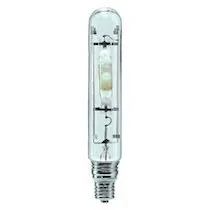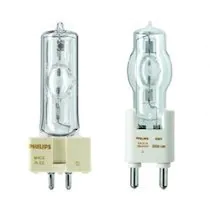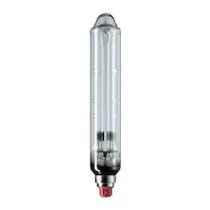Philips High Intensity Discharge (HID) Bulbs
High intensity discharge light bulbs (HID lamps) contain noble gases such as neon, zenon, krypton or argon to produce very high levels of light output while retaining a long average lifetime. HID bulbs are used in conjunction with a ballast to allow them to start and to regulate power while in operation. The Philips range of HID bulbs and gas discharge lamps are often the first choice for use in environments which require as much light output per watt as possible over a large area, such as in gymnasiums and warehouses and for use in street lighting. HID lamps typically have a low colour rendering, and will emit either a very cool or very warm white.
Show more
Filter inCategory
Too much choice?
Help me choose!
1-24 out of 70
results found
Filter
Sort by
High intensity discharge light bulbs (HID lamps) contain noble gases such as neon, zenon, krypton or argon to produce very high levels of light output while retaining a long average lifetime. HID bulbs are used in conjunction with a ballast to allow them to start and to regulate power while in operation. The Philips range of HID bulbs and gas discharge lamps are often the first choice for use in environments which require as much light output per watt as possible over a large area, such as in gymnasiums and warehouses and for use in street lighting. HID lamps typically have a low colour rendering, and will emit either a very cool or very warm white.
Show more
Compare Products
(/)
You can have up to 5 products in the comparison list.






 The colour code is a combination of colour rendering (CRI) and light colour (Kelvin). The first number indicates the colour rendering (1 = very poor colour rendering, 9 = maximum colour fastness). The second and third number contains the light colour. Example: the colour code 830 consists of good colour rendering (8) and warm white light (3000K).
The colour code is a combination of colour rendering (CRI) and light colour (Kelvin). The first number indicates the colour rendering (1 = very poor colour rendering, 9 = maximum colour fastness). The second and third number contains the light colour. Example: the colour code 830 consists of good colour rendering (8) and warm white light (3000K).
 Every bulb or fixture has an energy efficiency class A to G. Energy label A is the most efficient and G the least. LED lighting is the most sustainable lighting technique. Even if a LED bulb is rated E or lower, they still save 70% of energy compared to conventional lighting with the same energy label. Why is it the same label then? To motivate LED brands to get even more durable.
Every bulb or fixture has an energy efficiency class A to G. Energy label A is the most efficient and G the least. LED lighting is the most sustainable lighting technique. Even if a LED bulb is rated E or lower, they still save 70% of energy compared to conventional lighting with the same energy label. Why is it the same label then? To motivate LED brands to get even more durable.























